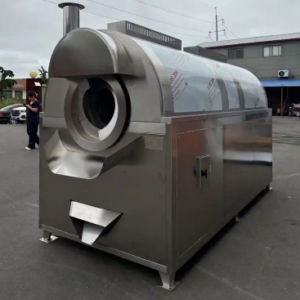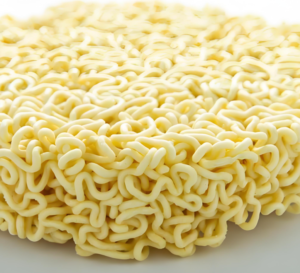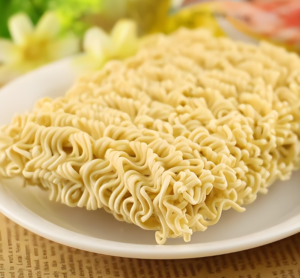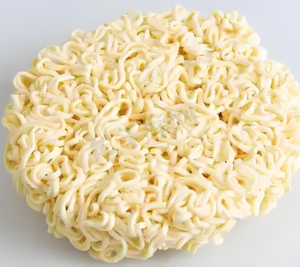<h1>Exploring the Diverse Shapes of Pasta: A Guide for Global Trade</h1>Introduction
Pasta, a staple in global cuisine, comes in an array of shapes that influence everything from cooking methods to market demand. For businesses in foreign trade, understanding these shapes is essential for sourcing, exporting, and importing products efficiently. This article delves into the various pasta shapes, their origins, uses, and implications for international commerce, providing valuable insights for B2B professionals.
macaroni making machine
ToggleWhether you’re a manufacturer looking to expand product lines or a trader navigating supply chains, knowing the diversity of pasta shapes can enhance your strategies and meet consumer preferences worldwide.
The History and Origin of Pasta Shapes
Pasta’s evolution traces back to ancient civilizations, with early forms emerging in China and Italy. The shapes we recognize today developed over centuries, influenced by cultural practices and technological advancements in food production.
In Italy, pasta shapes were originally designed for practicality, such as ease of drying or pairing with local ingredients. For foreign trade experts, this history highlights how regional traditions drive global demand, affecting export volumes and product differentiation.
Modern manufacturing techniques, like extrusion, have enabled the creation of intricate shapes, making pasta a versatile commodity in international markets. Businesses can leverage this knowledge to identify niche opportunities, such as specialty shapes for gourmet exports.
Common Pasta Shapes and Their Characteristics
Pasta shapes vary widely, each serving a specific purpose in recipes and appealing to different consumer tastes. Let’s explore some of the most common ones, categorized for clarity.
Long and Strand Pasta Shapes
Long pasta shapes are ideal for light sauces that can coat the strands evenly. Spaghetti, for instance, is a thin, cylindrical shape that’s easy to twirl and popular in everyday meals.
Fettuccine offers wider, flat ribbons that hold thicker sauces like Alfredo, making it a favorite in Italian-American cuisine. In global trade, these shapes dominate exports due to their versatility and long shelf life.
Linguine, similar to spaghetti but flatter, pairs well with seafood dishes. Manufacturers often produce these in bulk for B2B clients, emphasizing their role in high-volume international shipments.
Tubular Pasta Shapes
Tubular shapes excel at capturing hearty sauces and fillings. Penne, with its short, diagonally cut tubes, is versatile for baked dishes and salads, appealing to health-conscious markets.
Rigatoni features larger ridges that trap sauces effectively, making it a staple in family-style meals. For traders, these shapes are lucrative as they cater to diverse culinary trends, boosting export potential.
Macaroni, a classic elbow-shaped tube, is commonly used in comfort foods like mac and cheese. Its simple design makes it cost-effective to produce and ship, ideal for emerging markets.
Short and Twisted Pasta Shapes
Short shapes like fusilli, with its spiral twist, hold ingredients well in pasta salads. This makes it popular for casual dining and picnics, influencing seasonal trade patterns.
Farfalle, or bow-tie pasta, adds a fun element to dishes and is often used in children’s meals. Businesses can market these shapes for their aesthetic appeal, targeting premium retail segments globally.
Rotini, another twisted variety, enhances texture in mixed dishes. In B2B contexts, these shapes allow for creative branding and packaging, differentiating products in competitive markets.
Specialty and Exotic Pasta Shapes
Beyond basics, specialty shapes like orecchiette (ear-shaped) originate from Southern Italy and are perfect for robust sauces. They represent regional authenticity, which can be a selling point in niche exports.
Conchiglie, or shell-shaped pasta, traps fillings like in stuffed pasta recipes. For international traders, these offer opportunities in gourmet food sectors, where unique shapes command higher prices.
Other exotic options include radiatori, with their radiator-like design, which adds texture to soups. Understanding these can help B2B professionals tailor offerings to cultural preferences in global markets.
Regional Variations in Pasta Shapes
Pasta shapes differ by region, reflecting local ingredients and traditions. In Northern Italy, shapes like tagliatelle are prevalent, suited for meat-based sauces and influencing exports to Europe.
Southern Italian varieties, such as cavatappi (corkscrew-shaped), incorporate more grains and are designed for vegetable pairings, appealing to health trends in Asia and North America.
In the United States, innovations like wagon wheels (ruote) blend Italian roots with American creativity, driving demand in packaged foods. For foreign trade, recognizing these variations aids in sourcing from specific regions and meeting import regulations.
Globally, adaptations in countries like China or India create fusion shapes, blending pasta with local flavors. This diversity underscores the need for adaptable supply chains in B2B operations.
How Pasta Shapes Influence International Trade
The variety of pasta shapes plays a significant role in global trade dynamics. Shapes that are easy to store and transport, like spaghetti, see higher export volumes due to their efficiency in logistics.
Conversely, delicate shapes may require specialized packaging, increasing costs but offering premium pricing. B2B professionals must consider factors like durability during shipping to minimize losses.
Market trends, such as the rise of gluten-free or organic pasta, influence shape preferences. For example, penne in gluten-free variants is booming in health-focused markets, creating trade opportunities.
Trade agreements and tariffs also affect pasta imports; shapes popular in fast-casual dining, like fusilli, benefit from reduced barriers. Manufacturers can use this to expand into new territories, ensuring compliance with international standards.
Furthermore, sustainability in production—such as eco-friendly shaping processes—enhances a product’s appeal in environmentally conscious regions, boosting B2B negotiations.
Frequently Asked Questions
Below, we address common queries about pasta shapes to provide additional value for readers in the foreign trade sector.
What factors determine the best pasta shape for a sauce? The shape should complement the sauce’s consistency; for instance, ridged shapes like rigatoni hold thick sauces better, aiding in recipe development for export markets.
How do pasta shapes affect cooking time? Generally, thinner shapes cook faster than thicker ones, which is crucial for manufacturers to specify in product labeling for international compliance.
Are certain pasta shapes more profitable in global trade? Yes, versatile shapes like penne often yield higher margins due to widespread demand, making them a strategic choice for exporters.
What role do pasta shapes play in cultural adaptation for exports? Shapes can be modified to suit local tastes, such as creating smaller versions for Asian markets, enhancing market penetration.
How can businesses ensure quality in shaped pasta during transit? Using moisture-resistant packaging and monitoring humidity levels helps maintain shape integrity, reducing waste in global shipments.
Conclusion
In summary, the diverse shapes of pasta not only enrich culinary experiences but also drive opportunities in foreign trade. By understanding the characteristics, origins, and market implications of these shapes, B2B professionals can make informed decisions to optimize sourcing and exports. Whether focusing on common varieties or exploring regional specialties, this knowledge fosters innovation and competitiveness in the global food industry.








